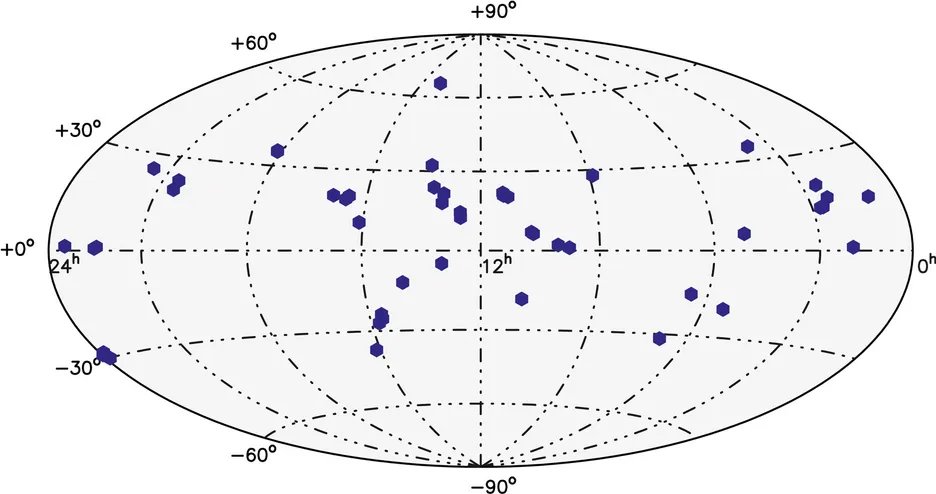The connection between astrophysical neutrinos and blazars
The origin of the most energetic particles that travel our Universe is a century-old puzzle that still remains largely unsolved since their first detection in 1912 by Victor Hess, who was awarded the Nobel Prize for this discovery in 1936. Very large particle detectors have since been built to measure the flux of cosmic rays (protons and heavier nuclei), from our galaxy and beyond, with energies up to 100 million times higher than those achievable at the Large Hadron Collider at CERN.

Focus Group Multi-Messenger Astrophysics and the United Nations Open Universe Initiative
Prof. Paolo Giommi (Italian Space Agency), Alumnus Hans Fischer Senior Fellow | Theo Glauch (TUM), Doctoral Candidate | Host: Prof. Elisa Resconi, Experimental Physics with Cosmic Particles, TUM
Despite the enormous technical efforts that have been made, especially over the last few decades, many challenges remain in the identification of the sources where cosmic rays originate. This Focus Group has contributed to the global effort to understand where and how these particles are accelerated.
Cosmic rays include different types of particles and radiation, each with its own peculiarities:
- Highly energetic charged particles can only travel a limited distance before being absorbed by cosmic background radiation. In addition, they are deflected by magnetic fields and therefore lose the directional information that is necessary to connect them to their origin.
- Neutrinos can travel cosmological distances but barely interact with matter, which means that to detect them it is necessary to use extremely large detectors. Hence only few high-energy astro-physical neutrinos have been detected so far.
- Gamma rays are produced in a large variety of astrophysical processes, a large majority of which are not necessarily connected to neutrinos or charged cosmic rays.
It was only recently that the IceCube Neutrino Observatory at the South Pole, together with several ground and space telescopes, announced the detection of astrophysical neutrinos and gamma rays emanating from a source named TXS 0506+056. Our studies here at the TUM-IAS found that this object is very peculiar since it is not only a blazar, a powerful galaxy hosting a supermassive black hole and a jet of highly accelerated particles pointing toward us, but also is a special subtype — a masqueraded BL Lac — that has a very strong photon field that facilitates particle interactions.
Blazars have long been suspected to be promising sources of cosmic neutrinos, as they are thought to be capable of accelerating particles up to the highest observed energies. Our study of TXS0506+056 was very encouraging, so over the last year we applied the analysis methods that were derived to study this object to dozens of additional high-energy neutrinos detected by IceCube over a period of several years. This effort was successful as it led to the identification of several other candidates, evolving the status of our knowledge about neutrino sources from the case of a single object to that of a sample of 48 blazars, approximately 20 of which, according to our statistical study, are expected to be truly neutrino emitters.
While the case for a correlation between astrophysical neutrinos and blazars is mounting, we are only beginning to exploit the full potential of the available data. Now that we have secured a sample of neutrino candidate counterparts, we have started detailed studies of each object. We have done so by combining the increasing availability of multi-wavelength archival observations with fresh data collected by our collaborators using large optical telescopes, in an effort to identify possible specific characteristics of neutrino emitters and possibly understanding these peculiarities from a theoretical viewpoint. The first results of these activities have been published in two very recent papers. Other publications will follow in the near future.
A good part of the research carried out by this Focus Group was included in the thesis of doctoral candidate Theo Glauch, who very successfully completed his doctoral studies (summa cum laude) a few months ago.
